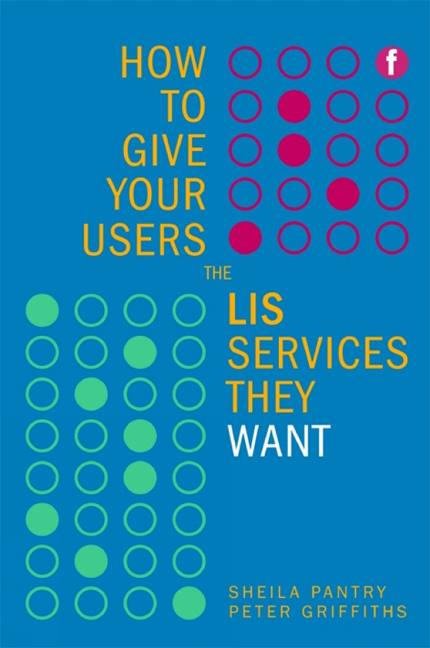Book contents
- Frontmatter
- Contents
- Preface
- 1 Why this book?
- 2 Understanding users – the what, why, where, when, how and who
- 3 What is the current knowledge about your users and their needs – is it really predictable?
- 4 Great expectations: how LIS professionals can manage and train users
- 5 Using information about past user behaviour
- 6 Making the most of knowing your users
- 7 Keeping track of changes in what users want
- 8 Tracking the future
- 9 Future perfect?
- Appendix 1 Reading list and references
- Appendix 2 Where to go for further information
- Index
2 - Understanding users – the what, why, where, when, how and who
Published online by Cambridge University Press: 08 June 2018
- Frontmatter
- Contents
- Preface
- 1 Why this book?
- 2 Understanding users – the what, why, where, when, how and who
- 3 What is the current knowledge about your users and their needs – is it really predictable?
- 4 Great expectations: how LIS professionals can manage and train users
- 5 Using information about past user behaviour
- 6 Making the most of knowing your users
- 7 Keeping track of changes in what users want
- 8 Tracking the future
- 9 Future perfect?
- Appendix 1 Reading list and references
- Appendix 2 Where to go for further information
- Index
Summary
In this chapter we look at:
➡ the services users need or should have?
➡ why we need to know about our users and their behaviour
➡ where users are and how this affects their ideas of good service
➡ when to talk to users about their information needs
➡ how users obtain information and how to assess these ways
➡ who you need to consider when planning and performing the audit – managers are customers too.
➡ and finally – what next?
In order to get a deeper understanding of user behaviour in your LIS, we suggest that you answer a series of questions designed to examine the way that your users access and make use of information resources.
What services do LIS users need, and what should they have?
The users of an LIS as well as its managers and staff have a role to play in delivering a service, but often they are unaware of this and the service does not tell them about this role. This is what users should do to ensure that they get the best from their LIS:
• be aware of what the library and information service offers
• identify their information needs
• agree to take those needs to the LIS as first port of call
• communicate them to the information service staff and discuss them as required
• give feedback to the information service
• keep information service staff aware of their changing subject interests
• involve the information service in projects that have information implications.
This may seem easiest in an organization that has its own library, such as a university or a business, but it should be possible with a little thought to apply these criteria to all types of service. At the end of the day it is the user who really decides the quality of the services, by:
• making demands for improvements on an existing service
• asking for new services
• showing a willingness to co-operate.
However, it is not very reasonable to expect users to do this by themselves, so they may need help to describe what they need, and to contribute more generally to developing information services to suit their requirements.
- Type
- Chapter
- Information
- How to Give Your Users the LIS Services They Want , pp. 13 - 32Publisher: FacetPrint publication year: 2009



